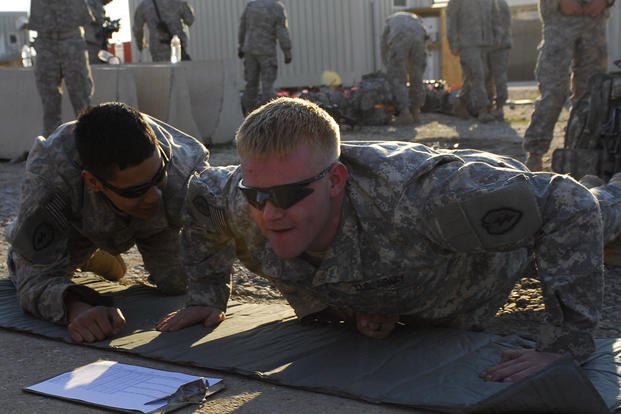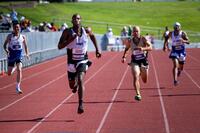Having a musculoskeletal strength imbalance can cause injury and other complications in your performance athletically or on the job. Here is a question from an officer seeking to improve his performance, keeping balance in mind.
"Stew, I have a question on how I should be progressing with opposing muscle group exercises. The last 3-set dip/pull-up workout on the "assist" machine, my dips increased to 8-10 per set and my pull-ups are (stuck) at 6 per set and struggling. Should I be getting "even/equal" increases in strength and development of these "opposing" muscle groups, and should I worry if I'm not?"
In a nutshell, no, I would not worry about it too much, but it is something to consider on how you tackle the next few months of your workout. Depending on your athletic history, your push muscles could be stronger than your pull muscles.
I know people who are just the opposite. A buddy SEAL of mine who was a heavyweight crew captain could do pull-ups all day. In fact, at 230 pounds, he still could do 30 pull-ups. However, he could not bench-press his body weight for one rep, so he had the opposite imbalance of the push/pull muscles.
Dips are likely just easier for you than pull-ups. Typically, dip max rep sets will double pull-up max rep sets. One thing you can try is to mix in another push exercise like push-ups into the workout, and you might find that the numbers are closer to even. But you still should balance out the workout with a few more pulling exercise reps like dumbbell rows or machine pull-downs.
He continues, "Also are there inherent problems with assist machines? Is there something else I should be doing? I have tried changing up the set order -- pull-ups first, dips first, alternating -- but see no difference."
People who exercise and those who do not often neglect the upper-back and rear shoulder muscles. Life has a way of bowing your upper back and rolling your shoulders forward. In technical terms, we are basically "internally rotated" with the shoulder girdle.
Many things in life "internally rotate" us, such as driving, sitting at a computer, playing video games, texting, carrying backpacks, bench-pressing, push-ups, sit-ups and many more exercises and daily life events. Posture is critical to performance and our confidence. Perfect posture is possible by adding in a few daily exercises for only a few minutes.
Basically, every "push" workout you do should be balanced out with a "pull" type of workout. You can do pull-ups to help balance out your push-ups as well as supplemental daily exercises like the following:
Upper-back exercise #1 (arm haulers)
Lie on your belly with your feet on the floor. Lift your chest slightly off the floor and wave your arms from your sides to over your head for 30 seconds.
Upper-back exercise #2 (reverse push-ups)
Lie on your stomach in the down push-up position. Lift your hands off the floor 2-3 inches instead of pushing the floor. This will strengthen your upper-back muscles that balance out the chest muscles. Do 20-30 reps. Rear deltoids and rhomboids are the muscles used.
Upper-back exercise #3 (birds)
Lie on your stomach with your arms spread to the height of your shoulders. Lift both arms off the floor until your shoulder blades "pinch" and place them slowly in the down position. Repeat for 20-30 repetitions, mimicking a bird flying.
This simple three- to four-minute program will help you keep your spine in proper alignment and fortify your delicate shoulder girdle. If you neglect these smaller muscles of the upper back and rear shoulder, all it will take is a fun toss of a football, baseball or overhead smash of a volleyball, and your rotator-cuff muscles will be talking to you immediately. If you want to hear your doctor tell you that you need surgery, neglect these muscles.
Stew Smith is a former Navy SEAL and fitness author certified as a Strength and Conditioning Specialist (CSCS) with the National Strength and Conditioning Association. Visit his Fitness eBook store if you're looking to start a workout program to create a healthy lifestyle. Send your fitness questions to stew@stewsmith.com.
Want to Learn More About Military Life?
Whether you're thinking of joining the military, looking for fitness and basic training tips, or keeping up with military life and benefits, Military.com has you covered. Subscribe to Military.com to have military news, updates and resources delivered directly to your inbox.


















